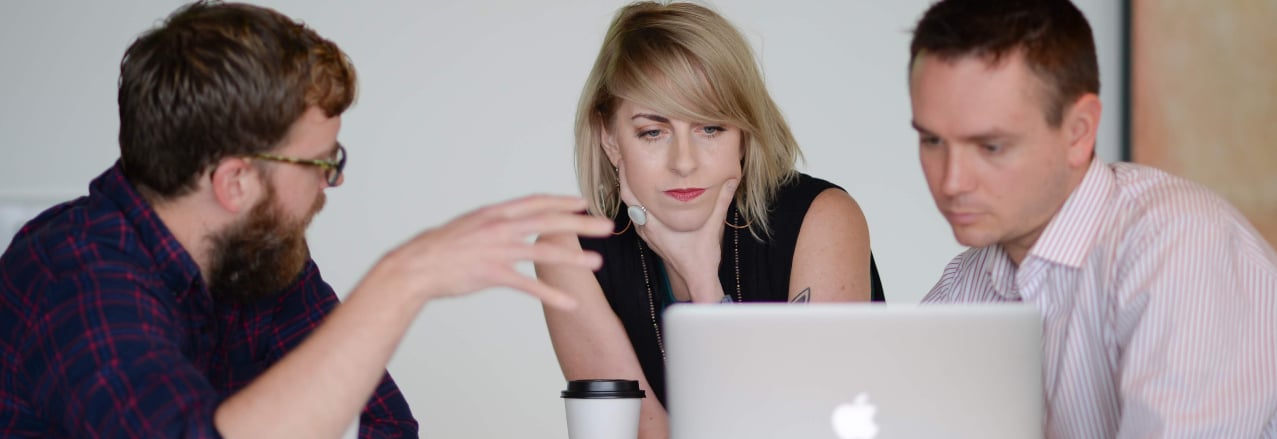
By
Karen Clark Cole
When creative minds get together, good ideas turn great. This creative thinking combined with the science of user research is what we call Evidence-driven Design℠ at Blink. It is the core for how we deliver excellence to our clients every day.
So how do we get together and collaborate on ideas when a project is top secret? When only one person at Blink knows what the client is working on, and only a handful of employees at the client’s company even know what it is?
We have different levels of collaboration
We know for sure that consulting is based on trust: A deep trust with our clients and our employees. It’s serious business and it’s what our values-based organization is built upon. With integrity and honesty at our core, this kind of trust comes naturally to us. Over the years, Blink employees have had prototypes figuratively handcuffed to their wrists as they go through airports, and have been “tented” within highly confidential areas of our clients’ campuses. As CEO, I actually get excited when I am excluded from knowing what someone is working on. It shows me our plan is working.
The competitive landscape
We rarely work on projects that are as cut-and-dry as Coke vs. Pepsi from a competitive standpoint. Blink is different than an “agency of record” or a traditional design agency; we are not working on brands or identities that are largely born from a single or group of creative minds. Our work is evidence-driven, meaning we base our designs on end-user data including user needs, motivations, and goals. We combine that data with our client’s business objectives and then layer in UX industry best practices. This means that the outcomes on each project are much more complex than one person’s award-winning idea. Even for companies that have products in the same space, the data and insights for each project are unique and specific.
The three levels below are how we think about protecting our clients while providing deep thinking and well-developed ideas:
Fully collaborative
As standard, everyday practice, everyone at Blink is under a non-disclosure agreement with each of our clients. This standard agreement creates accountability for our client’s IP yet still allows us to talk and work together within Blink, allowing maximum opportunities for collaboration.
Team collaborative
When a project is deemed top secret, the rules for collaboration change, even though everyone is still under a non-disclosure agreement. Project teams become specific and contained, and idea sharing only happens among the specific team members. Blink typically signs an additional NDA with the client to guarantee this level of confidentially will happen.
Client collaborative
The first two levels of confidentially – Full and Team Collaborative – are most common for us, and there is also a third level we employ a few times a year. Client Collaborative is what we call a project when Blink’s employees work onsite at the client’s secure facility and there is no collaboration within Blink at all. The client’s team becomes our UX design or research consultant’s collaboration group. The upside to this is we are deeply embedded within the client’s team, and there is less risk of anyone hearing or seeing what they are working on. The downside is that we miss the collective brainpower from our highly trained, deep-thinking UX professionals. These clients all agree, however, that a single Blink brain still serves as a differentiator and ensures that the end product will have a wildly successful user experience.
Rest assured
We love it all. We love working in a truly integrated way with our clients and deeply respect their trust in us. It’s why we come to work every day: Making technology human, one project at a time.
When not serving as CEO of Blink UX, you can find Karen organizing events to inspire young girls or training to become a professional kiteboarder.



